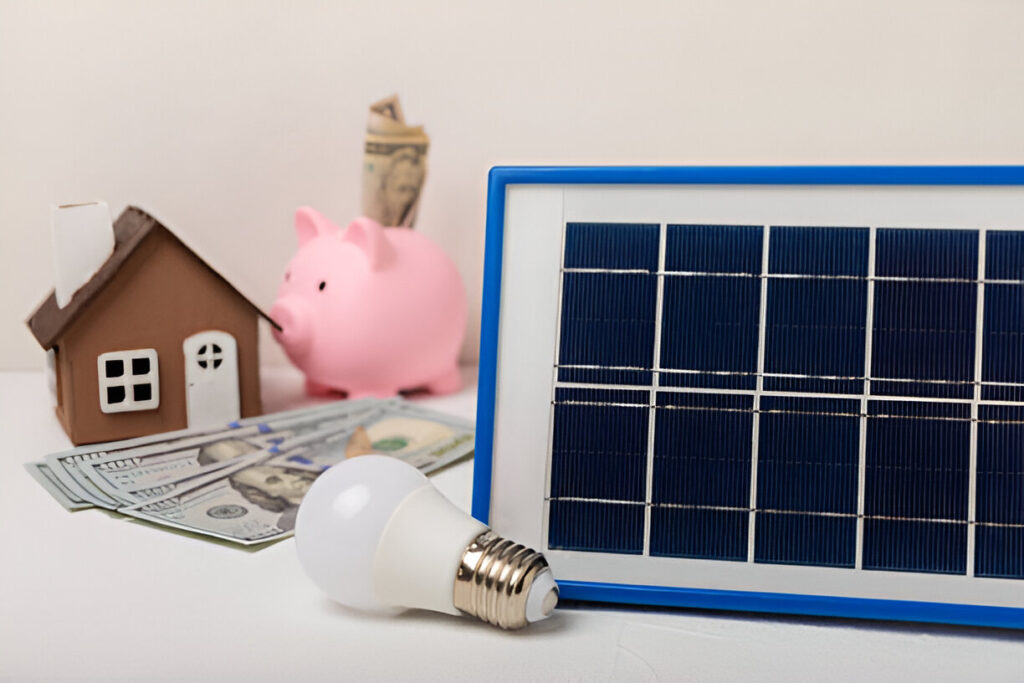Understanding Solar Energy
Solar energy is a renewable energy source that uses sunlight to produce power. You can harness this energy to reduce reliance on fossil fuels and lower electricity bills.
Solar Energy Fundamentals
Solar energy comes from the sun’s rays. These rays hit solar panels, which are made of photovoltaic (PV) cells. These cells convert sunlight into an electric current that you can use to power your home or gadgets.
The solar panels are usually arranged on rooftops or open areas where sunlight is ample. The energy collected can be used right away or stored in batteries for later. This system can greatly reduce your carbon footprint and help the environment.
Types of Solar Energy Systems
There are two main types of solar energy systems: Photovoltaic (PV) and solar thermal. PV systems are most common. They use panels that capture sunlight and turn it into electricity.
Solar thermal systems, on the other hand, focus on collecting sunlight to heat water or air for residential or industrial use. Both systems can be installed on rooftops or larger solar farms. Understanding the differences assists you in choosing the right system for your needs.
Environmental and Health Advantages
Using solar energy offers many benefits for both the environment and human health. By harnessing this clean energy source, you can help reduce harmful emissions and support a healthier planet.
Reducing Emissions and Combating Climate Change
Solar energy plays a big role in cutting down greenhouse gas emissions. When you use solar power instead of burning coal or gas, you help reduce the amount of carbon dioxide in the air. This is crucial in slowing down climate change.
Solar panels generate electricity without releasing pollutants. By choosing solar, you decrease your reliance on fossil fuels. This means fewer emissions that contribute to global warming. Switching to solar helps protect the planet for future generations and reduces your carbon footprint.
Air Quality and Public Health
Using solar energy also leads to better air quality. Burning fossil fuels can release harmful pollutants that affect the air you breathe. Solar energy systems do not emit these pollutants, helping to keep the air cleaner.
Better air quality positively impacts public health. Cleaner air means fewer health issues like asthma, allergies, and respiratory diseases. By adopting solar energy, you’re supporting healthier communities. Solar power offers a way to use electricity without compromising your health or the environment.
Economic Impacts of Solar Adoption
Switching to solar energy offers more than environmental benefits. Financially, it can cut down energy costs, foster job opportunities, and boost home values. These factors contribute to a brighter economic outlook for those who choose solar.
Cost Savings on Energy Bills
When you install solar panels, your utility bill can decrease significantly. Solar panels convert sunlight into electricity, reducing reliance on the grid. This results in lower electric bills, which is especially valuable as rising energy costs impact budgets. By generating your own power, you save money and also protect yourself from future rate hikes. By exploring options and energy compare rates, you can identify the best deals and maximize your savings. Over time, these savings can contribute greatly to household finances, freeing up resources for other needs or investments.
Job Creation in the Solar Industry
The solar industry is a fast-growing sector, offering numerous job opportunities. Installing solar systems requires skilled workers, from engineers to technicians. This demand creates jobs and stimulates local economies. Whether you’re interested in sales, manufacturing, or installation, there are roles available that support the economic benefits of solar energy. By choosing solar, you’re not just benefiting personally; you’re also supporting a thriving industry that contributes to overall job growth and economic resilience.
Enhancing Home Values
Another significant benefit of solar adoption is the potential to increase home value. Properties equipped with solar panels are attractive to buyers looking for cost-effective energy solutions. Homes with solar energy systems tend to sell faster and at a higher price than those without. Increased home value is an appealing aspect for homeowners planning to sell, as it provides a return on their investment. Buyers appreciate the prospect of reduced energy costs, adding to the appeal of a solar-powered home.
Solar Incentives and Financial Programs
Exploring solar incentives can help reduce the cost of using solar power. You can benefit from tax credits and loans designed to make solar energy more affordable.
Understanding Solar Tax Credits
When you install solar panels, you can save money with solar tax credits. The federal solar tax credit offers you a 30% tax credit for systems installed from 2022 to 2032. This means you can reduce your income taxes by 30% of the cost of the system. If you’re planning a solar project soon, it’s a great time to take advantage of this offer before rates decrease.
Net metering is another incentive that helps lower costs. If your system produces more electricity than you use, the excess is sent back to the grid. This can lead to credits on your utility bill, adding another level of savings to your solar investment.
Solar Loans and Savings
Solar loans are available to help finance the installation of your system. These loans allow you to spread out the cost over time, making solar power accessible without hefty upfront payments. Some solar loans offer low interest rates and flexible terms, which can align with your financial situation.
In addition to loans, the cost savings from reduced energy bills can be substantial. By investing in solar, you can see a significant drop in monthly energy expenses. This means that, over time, the system can pay for itself with the savings you accumulate. Exploring these options can guide you towards a more cost-effective use of solar energy.
Solar Technology and Installation
Solar technology has come a long way, with advancements in panel manufacturing and more efficient installation processes. These improvements make implementing solar energy systems easier and more effective.
Advancements in Solar Panel Manufacturing
Manufacturing solar panels has advanced significantly. New techniques focus on improving efficiency and reducing costs. The use of high-quality silicon is critical, allowing for the creation of panels that convert sunlight into electricity better. Innovations also include the development of lightweight and flexible panels that can be used in diverse settings, including homes and businesses.
Efficiency is further enhanced by adding layers of materials that capture more sunlight. This technology means you can expect panels that generate more power even on cloudy days. These improvements make solar panels a practical option for reducing reliance on fossil fuels.
The Process of Solar Installation
The installation process for solar systems is designed to be smooth and effective. It begins with an assessment of your roof to determine the ideal placement for panels. Installers then ensure your roof is suitable and offer solutions if it’s not ready for solar.
Once cleared, the panels and supportive structures are installed, connected to your home’s energy system, and integrated with the existing grid. Backup power options, such as batteries, provide reassurance during outages. A typical installation can take a few days to complete, and professionals handle permits and paperwork. This streamlined process makes it easier than ever to switch to solar energy.
Sustainability and Future of Solar Energy
Solar energy is a renewable resource that offers great promise for a clean energy transition. When you use solar panels, you contribute to reducing the carbon footprint. Because solar power produces no emissions during operation, its environmental impact is minimal.
One interesting way to use solar is through community solar projects. These projects allow you to benefit from solar power without having to install panels on your home. Instead, you can be part of a shared solar array, promoting energy independence for your community.
In terms of land use, agrivoltaics is an exciting development. This involves placing solar panels above crops, allowing for efficient land use. You can have both food and energy production on the same land.
Battery storage is a key to the future of solar energy. With better energy storage, you’ll be able to store solar energy during the day and use it at night. This technology is advancing, providing more reliability for solar power users.
Solar energy also plays a role in reducing the need for mining. Since it doesn’t rely on fossil fuels, solar reduces the demand for mining these resources, leading to a cleaner environment.
By embracing solar, you’re contributing to a sustainable future with a lower environmental impact. This clean and abundant renewable energy source promises a brighter future for you and the planet.



